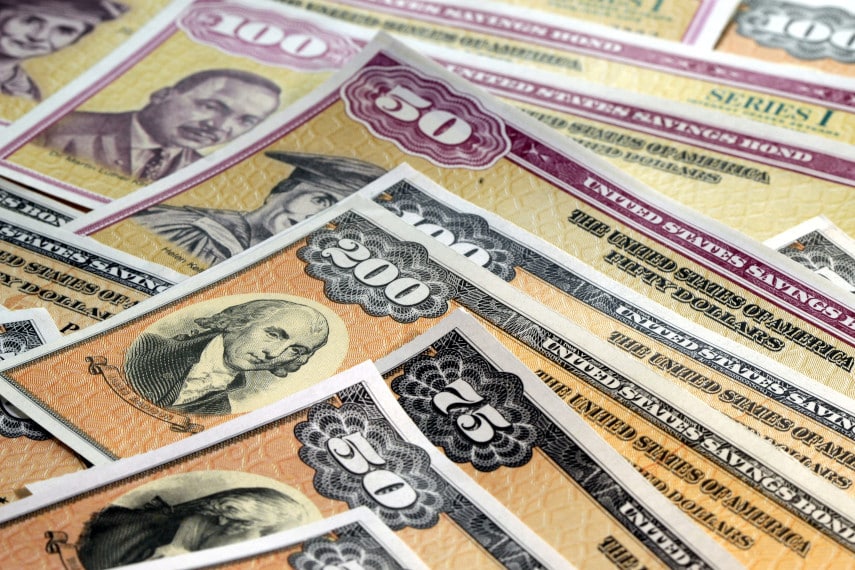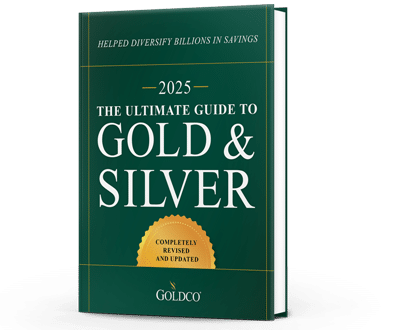Could Buying Gold Be a Good Retirement Plan?
With the recent unease in financial markets, more and more Americans are looking for safety when it comes to their assets Many people are starting to worry and are looking for alternatives, one of...
Precious Metals

If you ask most investors what assets they hold, the overwhelming majority of investors, and most likely their assets, are invested in stocks and bonds. These two commonly traded assets are easy to buy through brokers and retirement plans, are traded on exchanges, and are generally easy to liquidate. And with decent historical returns, there’s a reason they’re so popular with so many investors.
The theory behind them seems pretty sound too. Stocks are a share of ownership within a company. Some companies pay a share of profits to shareholders in the form of dividends. And as the company grows in value and increases in performance, the share price often increases, providing a benefit to shareholders when they decide to sell their shares.
The theory behind bonds is similarly simple. You pay money to buy a bond, you receive interest payments periodically, and a return of your principal when the bond matures. Nice and easy, except when the bond defaults. That’s why many investors try to choose bonds with minimal default risk. But one popular bond beloved by investors may actually be riskier than it seems.
When it comes to investing in bonds, the presumption on the part of investors is that those bonds will eventually mature and be bought back by the issuer. The assumption is that the issuer of the bonds eventually wants to eliminate or draw down its debt over time. But what happens when the issuer has no plans to reduce or eliminate its debt? What happens when the bond issuer continues to roll over debt, and eventually issues new debt to pay the interest on its older debt?
That’s a problem we’re seeing increasingly in the United States, as zombie companies are multiplying at a great rate. Zombie companies are those whose income is only able to pay interest on their debt, but they’re not able to repay their principal. At some point these companies become victims of their precarious financial situation, unable to service their debt, forced to issue more debt in order to pay interest, and eventually they have to declare bankruptcy. There’s one debt issuer in particular that has become quite a risk, but it’s not a company – it’s the federal government.
US Treasury securities are considered the gold standard when it comes to investment in sovereign debt, considered almost a risk-free asset. Anytime you even bring up the topic of default, you’re hit with the argument that the US government couldn’t possibly default on its debt because it’s backed by the full faith and credit of the US government. But what does that really mean?
At over $28 trillion, the US national debt is more than seven times larger than annual tax revenue. And the debt size surpassed US gross domestic product years ago, making the federal government’s debt larger than the entire US economy. A debt that large can only mean one thing: it won’t ever be repaid.
Even the interest on the debt is growing, with the government spending over $500 billion a year on interest expense. There’s no serious attempt to pay down the national debt, and recently it has begun to increase by trillions of dollars each fiscal year.
With so much debt issuance, it should be clear that the national debt will never be repaid. Default will occur at some point, it’s just a matter of when and how. The most common method of default is that of inflation, in which the government pays back investors with depreciated dollars. With inflation rising in recent months, that could become a problem for more and more investors, particularly with interest rates on government bonds being so low.
The other method of default is an outright default, which can’t be ruled out completely. That means that those who invest in US Treasury securities have to worry about whether they’ll even receive a return of their principal.
Everyone who holds Treasury securities today hopes that they’ll be able to sell their Treasuries before the government defaults on them. They assume that they can hold Treasuries until they need to sell them, and that there will always be a willing buyer for them. It’s the “greater fool theory” in action. But what happens if there are no buyers, or if so much Treasury debt is issued that buyers only want to pay pennies on the dollar?
That means that investing in Treasury debt might not be the risk-free option that many people would like to make it out to be. At some point the music will stop playing and everyone holding Treasuries is going to be out a bundle. But in the meantime, investors continue to treat Treasuries as though they’re a risk-free asset, which could be dangerous to their portfolios.
The thing about sovereign debt crises is that they often manifest themselves very quickly. If you think it will be 20 to 30 years before the US government faces a sovereign debt crisis and you think you can continue to hold large amounts of US Treasuries without consequences, you may face a rude awakening at some point in the future.
More and more investors are waking up to the reality that the US government won’t ever repay its national debt, that it will continue to move itself further and further into debt, and that there’s an increasing likelihood that the “safe” assets they hold today could become toxic in the future. US Treasuries may be considered a safe haven asset today, but in the future they could become an asset for suckers.
That’s why many more investors are turning to real safe and sound assets such as gold and silver. Unlike Treasury debt, which can be increased exponentially each year as the federal government continues to spend like a drunken sailor, gold and silver can’t be created out of thin air. Each year’s annual mine production of gold and silver adds incrementally to the amounts already existing above ground, but doesn’t drive up supply significantly.
That makes gold and silver relatively stable assets, and means that their prices won’t necessarily fluctuate greatly over time. Gold and silver offer slow and steady gains over the long run, free from the influence of centralized authorities who continue to drive the US dollar into oblivion through frivolous and uncontrolled spending.
Over time, gold and silver even rival stocks in their ability to add gains to investment portfolios. The past 20 years in particular have seen gold and silver make some incredible gains, and the way things are going with the US economy and US government spending, the next 20 could be even better.
For many investors, the choice between US Treasury securities and precious metals like gold and silver comes down to their beliefs about the direction the country is headed. If you believe the US government will return to fiscal sanity, that the economy will rebound and return to steady annual growth, and that the next few decades will see increased economic prosperity, you’re probably going to find a lot to like about investing in US Treasuries.
If, on the other hand, you think the next few decades will see an exploding national debt, higher taxes, and a stagnant economy, then you’re probably going to prefer gold and silver. At the end of the day, the decision is yours, and will depend on your view of which way the economy is moving.
So if you believe that the US economy is heading for a period of stagnation or stagflation, maybe it’s time to start thinking about investing in gold. Talk to the experts at Goldco today to find out how gold can benefit you.

